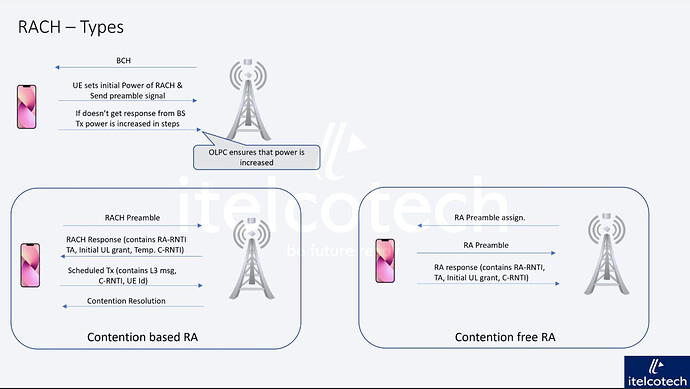In 4G, “contention-based RACH” (Random Access Channel) and “contention-free RACH” refer to two different approaches for managing the Random Access procedure, which is used by user devices (UEs) to initiate communication with the network :
-
Contention-Based RACH:
- Purpose: Contention-based RACH is used when multiple UEs attempt to access the network simultaneously.
- How it works: UEs choose a random access preamble (PRACH preamble) and transmit it to the base station (eNB) during a specified random access opportunity. There are 64 preamble signatures in 4G cell.
- Contention Resolution: If multiple UEs choose the same preamble (signature) and collisions occur, a contention resolution mechanism is employed. UEs that experience collisions select new random backoff times and make additional attempts.
-
Contention-Free RACH:
- Purpose: Contention-free RACH, also known as scheduled RACH, is used when the network allocates specific time slots or resources for UEs to access the network without contention.
- How it works: The network schedules specific time slots or resources during which UEs can transmit their random access preambles without the risk of collision. This scheduling is typically done by the network based on factors such as the network load and the number of UEs requiring access.
- Advantages: Contention-free RACH can reduce contention-related delays and increase the predictability of access. It is often employed in scenarios where predictable and low-latency access is required.
Contention-based RACH is more suitable for scenarios with a variable number of UEs attempting to access the network simultaneously, while contention-free RACH is appropriate in scenarios where deterministic and low-latency access is essential. The choice between these approaches is often influenced by factors such as network load, latency requirements, and the specific use case.
LinkedIn: ![]()
